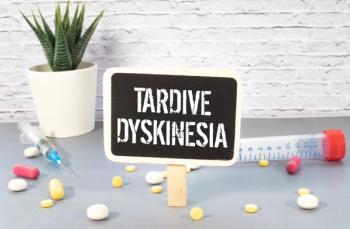
Optimizing ADHD Treatment in Adults
ADHD is an all-day affair, and treating it in an adult population can be difficult.
“Can adults have ADHD?” Andrew J. Cutler, MD, laughingly asked at the beginning of his 2022 NEI Congress session on optimizing adult ADHD treatment.
Approximately 80% of adults with ADHD go undiagnosed and untreated, Cutler shared.1 Furthermore, 87% of adults with ADHD have at least 1 comorbid psychiatric condition, like major depressive disorder (60%), substance use disorder (57%), and anxiety (56%).2-4
“This is a big deal. Morbidity and mortality are much higher if you have ADHD, especially with comorbidities. No. 1, it’s critical to recognize ADHD when someone presents with it, but no. 2, it’s critical when you do diagnose ADHD to look for and address these comorbidities, which again, are so common,” Cutler said.
\As to stimulant treatments, the evidence currently supports methylphenidate in children and adolescents and amphetamines in adults, as first choice at the group level.5 However, Cutler stressed that a positive response to stimulants does not confirm the diagnosis of ADHD, and up to 30% of adults with ADHD do not have a beneficial response to the first stimulant trial.6-9
“Data suggests amphetamine may work better for adults, but there’s a lot of individual variability and methylphenidate can definitely work for adults,” Cutler said.
Additionally, according to the results of a meta-analysis of within-subject comparative trials evaluating response to stimulant medications, 28% of participants responded best to amphetamine treatment, 16% responded best to methylphenidate treatment, and 41% had an equal response to either stimulant.
“What I really encourage you to look at is the delivery system, the formulation. This makes all the difference because the thing with stimulants is both methylphenidate and amphetamine have short half-lives, 4 to 6 hours,” said Cutler. “In the old days, the kid would have to go to the school nurse to get that second dose of Ritalin. Now what we want is some kind of mechanism to extend the release throughout the day. As I said, ADHD is an all-day affair.”
A note that Cutler shared about formulations: chewing or crushing pills to make them easier to consume may alter their pharmacokinetics and is inadvisable for most stimulants.
Although there are many methylphenidate and amphetamine stimulant options, there are only 2 nonstimulants approved for adults: atomoxetine and viloxazine ER. Research suggests moderate efficacy of stimulants and atomoxetine for emotional lability in adults with ADHD.10 Viloxazine ER, a norepinephrine reuptake inhibitor, was FDA approved for use in children/adolescents in April 2021 and for adults in April 2022. According to the results of a phase II double-blind, placebo-controlled, efficacy and safety study of extended-release viloxazine in children with ADHD, improvement in ADHD symptoms versus placebo were seen in the 200 mg dose (0.547), the 300 mg dose (0.596), and 400 mg dose (0.623).11 Adverse events in adults include insomnia, fatigue, and nausea.
“ADHD is not just there when you’re trying to study or doing a project for work. It’s there 24/7. It affects every aspect of your life whether you realize it or not,” Cutler shared.
References
1. Ginsberg Y, Quintero J, Anand E, et al.
2. Torgersen T, Gjervan B, Rasmussen K.
3. Ohnishi T, Kobayashi H, Yajima T, et al.
4. Quenneville AF, Kalogeropoulou E, Nicastro R, et al.
5. Cortese S, Adamo N, Del Giovane C, et al.
6. Holze F, Vizeli P, Müller F, et al.
7. Zametkin AJ, Ernst M.
8. Rapoport JL, Buchsbaum MS, Zahn TP, et al.
9. Rapoport JL, Buchsbaum MS, Weingartner H, et al.
10. Moukhtarian TR, Cooper RE, Vassos E, et al.
11. Johnson JK, Liranso T, Saylor K, et al.
Newsletter
Pharmacy practice is always changing. Stay ahead of the curve with the Drug Topics newsletter and get the latest drug information, industry trends, and patient care tips.











































































































































































































